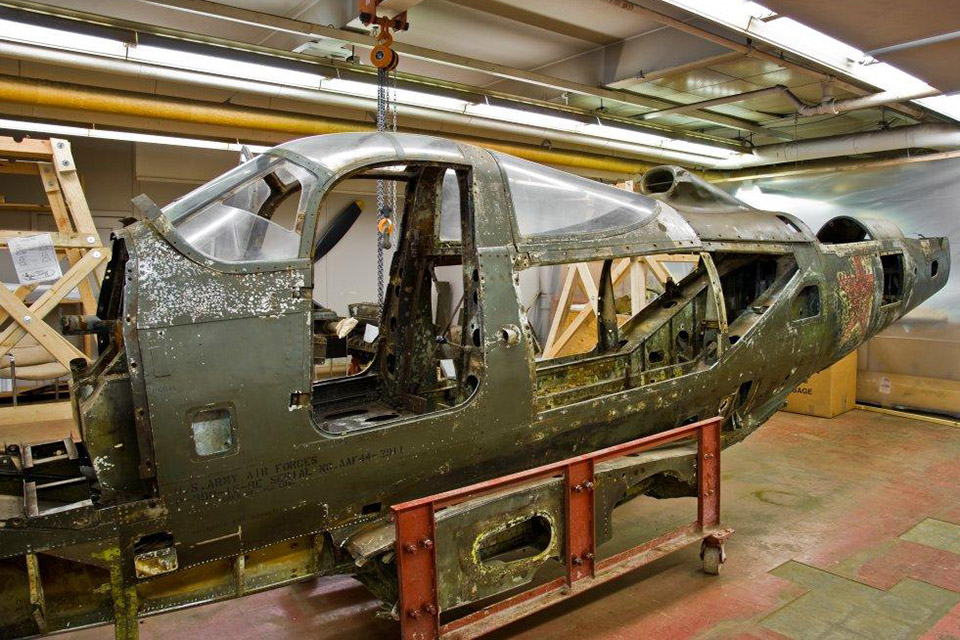Nearly 5,000 P-39 Airacobras, all produced at the Bell Aircraft plant in Wheatfield, N.Y., flew for the Soviet air force in WWII. The Soviets employed the sturdy, cannon-armed P-39 to great effect. But in November 1944, engine failure consigned one well-traveled P-39Q, no. 44-2911, to a watery grave.
Twenty-two-year-old Lieutenant Ivan Inanovich Baranovsky was ferrying his supply-laden fighter to a forward air base near Norway when two engine connecting rods failed and punched through the crankcase, forcing him to belly-land on frozen Lake Mart-Yavr. Baranovsky either died on impact or was knocked unconscious and drowned when his plane sank to the bottom.
Sixty years later, in July 2004, a fisherman noticed the silhouette of a plane beneath Mart-Yavr’s crystal waters and alerted warbird recovery expert Jim Pearce (warbirdfinders.co.uk), then working to recover a German fighter from the very same lake. Pearce’s team pulled the Airacobra from its underwater tomb and discovered within the fuselage the remains of Lieutenant Baranovsky, two of his medals—the Glory Order III Degree and Military Order of the Red Banner—and a logbook. It revealed that Baranovsky had piloted the P-39, which the Soviets dubbed White 23, in operations against the Finnish air force in Karelia and the Luftwaffe in Norway. He flew a total of 90 missions and logged seven victories, earning a Hero of the Soviet Union burial.
The P-39, which the Americans called Miss Lend Lease, was completed at the Bell Aircraft plant on November 23, 1943, one of 3,291 Q models delivered to the Soviet Union. In 2009 Hugh Neeson, president of the Ira G. Ross Aerospace Museum in Buffalo, N.Y., traveled to England and
purchased the plane from Pearce for $400,000. On April 1, 2009, the fighter returned to its birthplace at the Bell plant, now part of Niagara Falls International Airport.
The Ira G. Ross Museum is currently repairing corrosion and structural damage for an exhibit that will display the P-39 as it looked when it belly-landed on the frozen lake. The exhibit is slated to open in the fall of 2011 or spring of 2012. According to Ira G. Ross vice president Paul Faltyn, the museum has long-term plans for a full-scale restoration, which would require new instrument panels, wheels, brakes, propeller and engine.
Back in New York, Miss Lend Lease yielded one final surprise. On the instrument panel was the signature of Helen Rose, and on the relay box cover that of Eleanor Barbaritano, two of approximately 14,000 women who worked at the Bell plant in the early 1940s. “This gives an added human dimension to the story of the plane,” Neeson told The Buffalo News. “Here were these two young girls who knew these planes they were working on were going far and wide, and they signed their names to see what would happen.”
For more information, visit wnyaerospace.org or see the video of the recovery on YouTube.





